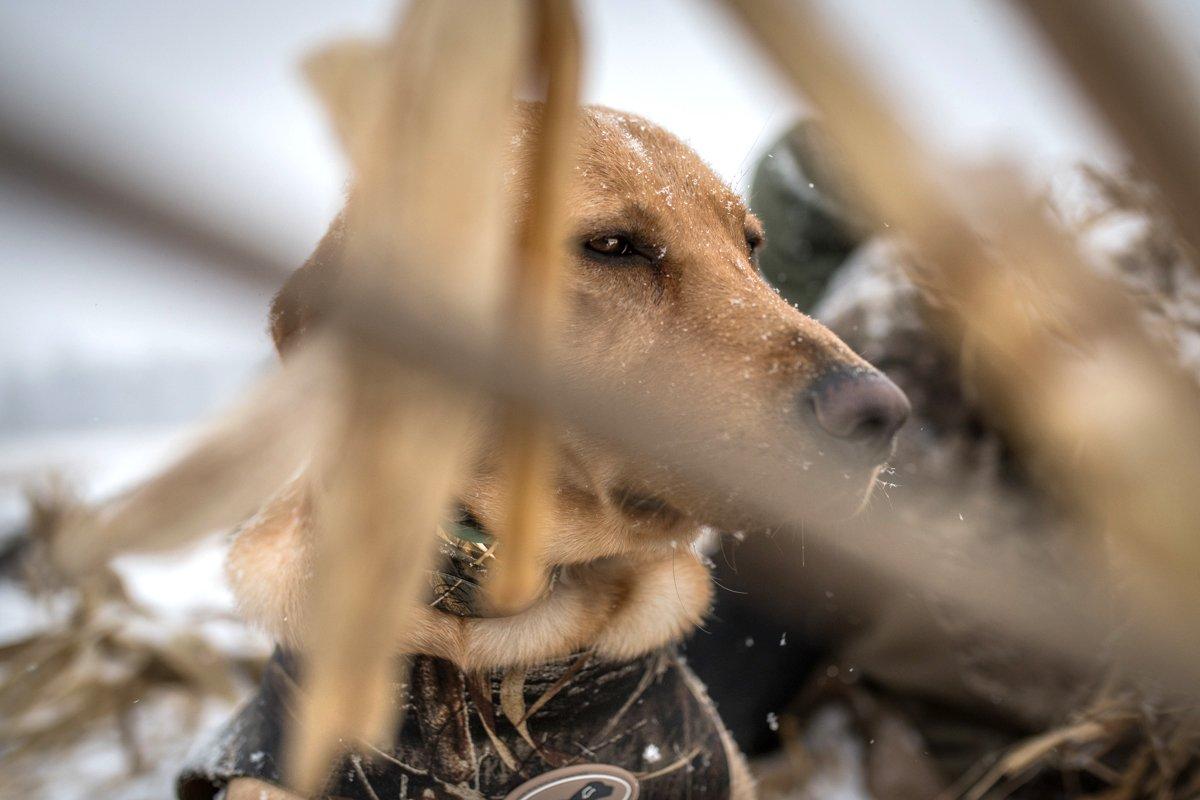Concealing Canine Helpers Can be Critical
As we dream and scheme how to hide our faces, guns and forms so ducks and geese won't pick us out, we often forget about concealing our canine helpers. Yes, in many situations, we need to hide our dogs.
That's not a difficult job, but we still need to put some brainpower into it. Here are a few pooch-concealment tips.
Hiding Begins at Home
First, let's acknowledge a basic rule: Dogs are typically adequately hidden if their forms aren't sky-lighted — that is, if they have background cover or terrain to break up their shape — and they remain still as birds approach. The latter consideration might be the most important element of keeping Rover concealed. Ducks and geese usually won't pick out any dog — black, brown or light — if the pooch remains seated or prone as birds finish. Waterfowl will flare, however, if that dog jumps, breaks, barks or even yips at the moment of truth. So, as you've likely discerned, the biggest component of field concealment begins with basic obedience.
I won't go into a long dissertation, as many professional dog trainers and veteran hunters can provide more perspective on training methods. Suffice to say, your retriever must sit and stay quietly even in the face of temptation, such as a flock of mallards pitching down in your decoys. The only way to accomplish that — to essentially stifle the dog's predatory instincts temporarily — is through consistent, patient and repeated training and correction. The sit command means that a dog should sit and stay until released. When you shoot, the dog should remain seated — that is, it shouldn't break — until you give the go-ahead. The principles hold true whether you're hunting a prairie slough, flooded timber, a shoreline hide or in a boat.
Sounds easy, right? Actually, that paragraph encompasses a lifetime of training. The bottom line? Learn how to keep your dog seated, steady and quiet in the field, and practice that discipline again and again. Oh, and if your furry companion isn't 100 percent steady, consider some type of safe restraint to deter breaking, such as a leash attached to a ground stake.
Dog Blinds
Some open scenarios, such as sandbars or dry fields, pose great concealment challenges. That's where modern dog blinds come in handy. These fairly modern contraptions, which resemble tiny tents, cover the form and movements of dogs as birds approach.
Using these shouldn't be difficult if you kennel-train your dog from a young age. As denning animals, dogs actually like being in their kennels or, in this case, a blind. Get Rover used to the doggie blind during the off-season. Let the pooch become comfortable with the blind, and then direct your buddy inside with the kennel or place command. Practice lifelike scenarios with dummies or pigeons to drive home the idea that the dog should remain in the blind until you release it. Your pup might take a while to get used to the idea, but consistent repetition should eventually do the trick.
Hide Well, But …
Sometimes, you can actually hide your dog too well. Remember, if your pup can't mark birds as they fall, it will be behind the 8-ball when you call for the retrieve. For years, I'd wedged my skiff deep into rice or cattails and somehow expect my retriever — with her far lower vantage point — to mark teal and wood ducks as they crashed into cover 30-plus yards from us. Then, I'd become frustrated when she seemed clueless about where the bird was.
Duh. She couldn't see it. Now, I make sure she has a clear view of the field of action and concentrate more on keeping her still than covering her with blinding vegetation. That really boosts her natural marking abilities. She's much happier these days. So am I.
Click here for more Realtree waterfowl hunting content. And check us out on Facebook.







